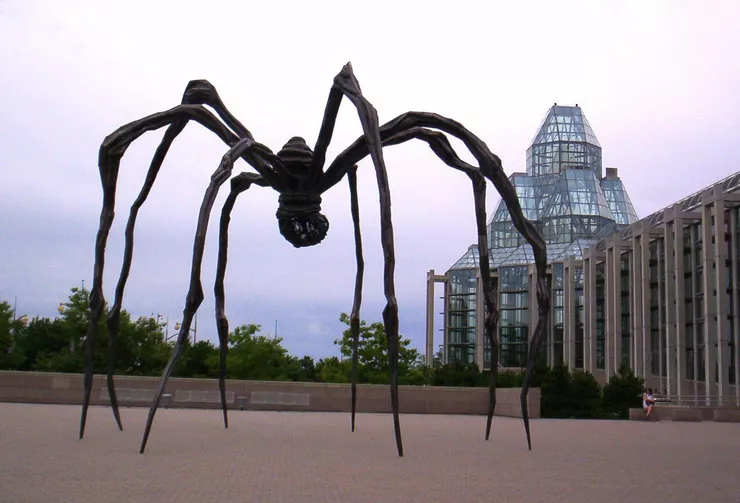When Louise Bourgeois (1911-2010) began to create her bronze spider sculptures, some of which were up to 9 metres high, in the mid-1990s, she was actually returning to her roots: a drawing of a spider, now privately owned, proves that Bourgeois used the animal as a symbol for her protective mother as early as 1947. She continues to fascinate the art world today with these deeply personal works: in June 2022, one of the large sculptures from 1996 was sold at Art Basel for 40 million US dollars. Louise Bourgeois explained the basis of her artistic work thus: »I do not forgive and I do not forget. That is the motto that feeds my work.«
More on the subject Louise Bourgeois
Louise Bourgeois: her long way to the top
In 1911 in Paris, a girl is born who would live to be almost 100 years old. In 2010, at the end of her life, she is where many want to be: at the top of the art world. Louise Bourgeois asserted herself, with spiders and phalli, performance and installations - and her »indomitable« nature.
Catharsis incarnate
Three works from the middle of her life tell of Louise Bourgeois' process of reappraisal: Janus Fleuri (1968), The Destruction of the Father (1974), and A Banquet/A Fashion Show of Body Parts (1978) deconstruct gender, the body, and one's own father. They bespeak the story of how Bourgeois therapized herself in mid-life and the pleasure she gained from destroying everything.
Dive deeper into the art world
Louise Bourgeois: her long way to the top
In 1911 in Paris, a girl is born who would live to be almost 100 years old. In 2010, at the end of her life, she is where many want to be: at the top of the art world. Louise Bourgeois asserted herself, with spiders and phalli, performance and installations - and her »indomitable« nature.











